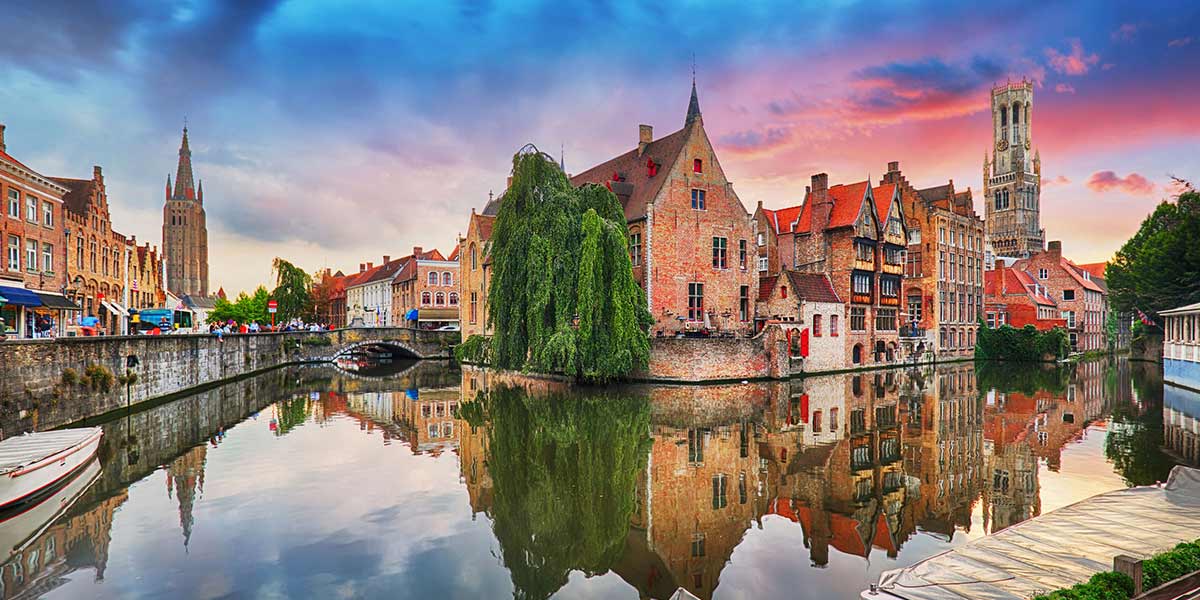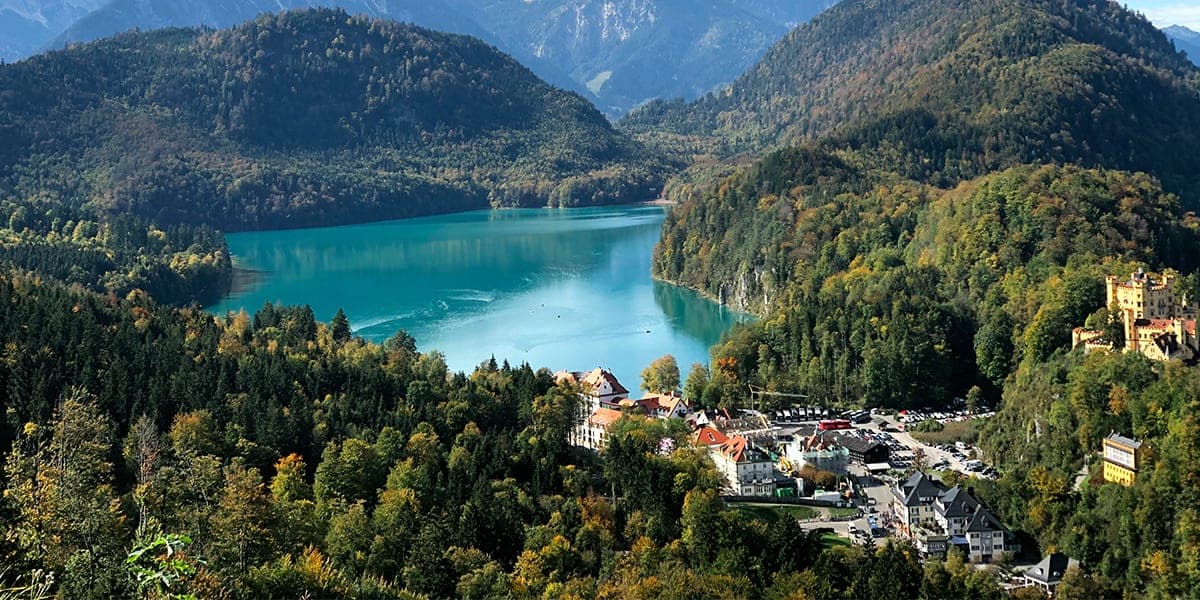Battlefields in France

Battlefields in France
From pitched medieval encounters to the twentieth century’s two World Wars, for over 600 years the countryside in France has borne witness to great battles that have claimed the lives of hundreds of thousands of men. Many of these fields of battle have remained undisturbed and have become open-air museums with hundreds of memorials, war grave cemeteries, museums and trenches.
Many of France’s battlefields are found in the north of country, and along its border with Belgium, so the best way to reach them is on one of our car ferries to Dunkirk, Calais or Dieppe, or by sailing from Newcastle to IJmuiden and driving from there. Taking your car will also make travelling around a lot easier, as getting to some of the more rural spots can be tricky if you plan on using public transport.
The Battle of Agincourt
Located 12 miles northwest of Saint-Pol-sur-Ternoise in the Pas-de-Calais department of northern France, Agincourt is a site of great historical significance. In 1415, this battlefield witnessed the prowess of King Henry V's 5,900 British longbowmen and knights as they triumphed over a French army four times their size. The Battle of Agincourt remains one of the most well-documented medieval battles. However, nothing surpasses the experience of visiting this historic site in person.
At the battlefield museum, interactive exhibits, videos, and recovered relics offer a glimpse into the past. Armed with a map from the museum, you can explore the battlefield, visit the monument, and immerse yourself in the panoramic views of the fields where history was made over 600 years ago.
The Battle of the Somme
The Battle of the Somme, one of the largest battles of WW1 on the Western Front, occurred between 1 July and 18 November 1916 on both sides of the River Somme. This battle, involving the armies of the British and French empires against the German empire, resulted in more than one million men wounded or killed, making it one of the bloodiest battles in human history.
Visiting WW1 battlefields in France, particularly the Somme, requires time due to its vastness and the numerous cemeteries, museums, and memorials in the area. Key sites include the battlefield at Gommecourt, Sheffield Memorial Park, and the Sunken Lane at Beaumont Hamel, where the 1st Lancashire Fusiliers advanced. Other highlights include Hawthorn Ridge Cemetery and the battlefield at Thiepval.
The Battle of Verdun
The Battle of Verdun, one of the largest and longest battles of WW1, took place on the hills north of Verdun-sur-Meuse in northeastern France from 21 February to 18 December 1916.
The area surrounding the Verdun battle site is steeped in military history, with forts, underground tunnels, gun positions, trenches, and museums to explore. Notable locations include Fort Douaumont, Fort Vaux, and the Douaumont Ossuary, which houses the remains of 130,000 unidentified soldiers. The newly refurbished Fleury Memorial Museum, the Voie Sacree, the Trench of Bayonets, Verdun Citadelle, and the Froideterre fortifications are also worth visiting.
The Battle of Dunkirk
Dunkirk, located on the coast of northern France and just six miles from the Belgian border, was a critical location during WW2. Here, the German Army trapped British and French soldiers on the beaches. In response, the British Army launched Operation Dynamo, successfully evacuating 330,000 allied troops from May 26, 1940.
Your trip to the Dunkirk battlefield should start at Bray Dunes, where you can still see the shipwrecks from Operation Dynamo. Visit the Dunkirk Commonwealth War Grave Cemetery, resting place for many who fell in the battle, and explore the Dunkirk museum, home to fascinating artifacts, photos, and maps. Finally, don't miss Cassel, a small hilltop town offering panoramic views of the Dunkirk beaches.
Flanders Fields
Flanders Fields, located in the Flemish region of Belgium, is one of the most iconic WW1 battlefields in Europe. This location witnessed some of the bloodiest battles during the conflict, including the Battle of Ypres. Today, it serves as a poignant reminder of the devastating impact of war. The landscape, once scarred by trenches and explosions, has healed over time, but the numerous cemeteries and memorials dotted across the fields stand as lasting tributes to the lives lost. One of the most famous is the Menin Gate Memorial in Ypres, which bears the names of more than 54,000 soldiers who perished in the battle but have no known grave.
The Battle of Vimy Ridge & Battle of Arras
The Battle of Vimy Ridge and the Battle of Arras are two significant WW1 battles that took place in France. The Battle of Vimy Ridge, fought in April 1917, is often cited as a defining moment for Canada, as all four divisions of the Canadian Corps fought together for the first time and successfully captured the ridge from the German army.
The Battle of Arras, fought in April and May of the same year, was a British offensive that resulted in some of the highest casualties of the war. Today, the Vimy Ridge National Historic Site of Canada and the Arras Memorial serve as lasting reminders of these battles, honouring the memory of the soldiers who fought and died there.
Siege of Meaux
The Siege of Meaux occurred during the Hundred Years' War in 1422. It was one of the final battles of the war and marked the culmination of England's successful campaign in northern France. The English king, Henry V, led his troops to victory against the French, but he fell ill during the siege and died a few months later.
Today, the town of Meaux offers a rich tapestry of history for visitors to explore, including the Museum of the Great War which provides an in-depth look at the First World War. The Siege of Meaux is commemorated in the town's historical narrative, and its impact on the course of English and French history is still recognized today.
Dieppe War Memorial and Canadian War Cemetery
The Dieppe War Memorial and Canadian War Cemetery honour and mark the sacrifices made during the tragic Dieppe Raid of World War II. This disastrous Allied offensive on the German-occupied port of Dieppe, located in Normandy, resulted in significant losses, marking a sombre chapter in Canadian military history.
The memorial at Square du Canada and the nearby cemetery bear testament to the bravery of those involved, holding plaques and graves of the fallen. These sites, easily reached via our Newhaven-Dieppe ferry route, offer visitors a chance to reflect on history while enjoying the peaceful landscapes that have since arisen from the wartime turmoil.
Travel guides

Belgium
Characterised by picturesque, medieval town centres and extraordinary landscapes, Belgium boasts an endless list of things to do.

Germany
Germany has one of the most interesting and diverse histories of any country in Europe, and a landscape to match.

Lithuania
The hidden gem of the Baltic countries, Lithuania is a heady cocktail of both stunning natural beauty and wonderful man-made architecture.

Poland
Famous for friendly, welcoming locals and cheap, but brilliant, food and drink, Poland is fast becoming one of the best short break destinations around.
Our routes

Dover-Calais Ferry Crossings
Our fastest and most popular ferry crossing, our Dover to Calais route takes only 100 minutes, allowing you to explore Europe at your leisure.
From
€103
per car + up to 4 people, one way*

Dover-Dunkirk Ferry Crossings
Our short, convenient sailings from Dover to Dunkirk are the perfect way to start a trip to Europe.
From
€103
per car + up to 4 people, one way*

Newhaven-Dieppe Ferry Crossings
Head across the Channel on our Newhaven to Dieppe route and in just 4 hours you can sail in comfort from the south of England to France's beautiful Normandy coast.
From
£93
per car + 2 people, one way*

Newcastle - Amsterdam ferries
Travel overnight in your own private cabin from Newcastle to Amsterdam, enjoying the fresh sea air, dining options and onboard entertainment. Bring your car and embark on your European road trip – you deserve it!
15%
discount
FAQs
Prices are subject to availability. Telephone booking fees apply. Terms and conditions apply.